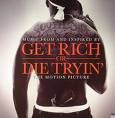Exchange traded funds (ETFs) are versatile investing instruments that provide investors with a low-cost way of gaining diversified exposure to asset classes or specific sectors.
When the stock markets collapsed last year, investors flocked to extremely safe assets to stash their wealth. Since then, some form of stability seemed to have appeared across global markets and many are looking at ways to invest opportunistically in specific sectors based on a secular trend or macroeconomic theme.
Short-term gyrations of the market, a common characteristic of the global financial crisis, often leave certain sectors or subsectors trading at less than its intrinsic worth. Investors may also find it easier to time industry allocations based on the business cycle as opposed to timing the purchase and sale of individual securities.
A big deterrent to investing in a sector is the cost involved in acquiring a sufficient representation of the desired sector. Buying shares in several companies requires large amounts of capital while thematic or sector based unit trust funds levy sales charges and yearly management fees.
To overcome these hurdles, investors in matured financial markets have turned to exchange traded funds (ETFs) to invest in a particular sector. As a result, ETFs have grown increasingly popular with both institutional and retail investors.
Since 2002, assets held in ETFs around the world increased more than fivefold while the number of global ETFs increased more than eightfold. According to Lipper Inc, US$125 billion (RM438.75 billion) moved out of unit trust funds, in Europe, during the first eight months of 2008 while ETFs received net inflows of US$48 billion (RM168.48 billion).
ETFs are baskets of stocks, bonds or commodities based on an index. This instantly offers broad diversification and does away with the risk involved in owning stock of a single company. ETFs are listed and traded on a stock exchange. With units in an ETF, investors can gain exposure to a geographical region, market, industry or sector, commodity such as gold or oil, or even a specific investment style such as growth or value.
To identify the exposure that investors will obtain by buying units of an ETF, look at its underlying benchmark as this reveals the assets held in the ETF. For example, Asia’s first Syariah-compliant ETF, MyETF-Dow Jones Islamic Market Malaysia Titans 25 (MyETF-DJIM25) trades on Bursa Malaysia and tracks the Dow Jones Islamic Market Malaysia Titans 25 Index. This indicates that MyETF-DJIM25 holds the 25 leading syariah-compliant listed companies in the country.
A key difference between ETFs and unit trust funds is in its objective. ETFs are passively managed and closely follow the performance of its underlying index. Unit trust funds are actively managed and aim to outperform its benchmark index. This creates a difference in the cost to invest for both investing vehicles with ETFs being relatively cheaper without sales charges and a fee for active management.
Unlike unit trusts, ETFs trade during market hours and are more transparent as investors can see the assets held by the ETF on a daily basis. In comparison, unit trust funds publish their holdings on a monthly basis.
Nevertheless, ETFs are not a “one-size-fit-a ll” solution for everyone. Successful investing in a sector via ETFs still requires research and knowledge.
Investors must know exactly what the ETF is tracking and how it complements their portfolio (refer to box). As with any other investment, it is good practice to establish an entry and exit strategy and to consider the risk involved.
While investors can hope for the best, they should prepare themselves for the worst. Avoid impulse purchases or avoid jumping into a ‘hot’ sector that has already seen a marked increase in value. Instead, consider looking at long-term business fundamentals as this can indicate sectors that have the potential to appreciate.
Asset Allocation with
Malaysian ETF’s
A right mix of stocks, bonds, cash, and commodities in a portfolio that is well diversified within each asset class reduces risk of a portfolio.
To boost returns, investors usually make tactical asset allocations which can be sector, industry or market specific. In both situations, exchange traded funds (ETFs) which are low-cost and broadly diversified can be used. For example; the two equity ETFs trading on Bursa Malaysia offers exposure to the large-cap segment of the Kuala Lumpur Composite Index (KLCI) while the only bond ETF in the country holds government securities.
These ETFs can be used by investors to diversify between different asset classes and to invest in the broad market. Small or mid-cap ETFs which provide a way to invest in different sectors may be available in the future and then, can be used for tactical asset allocation based on an outlook.
-




No comments:
Post a Comment